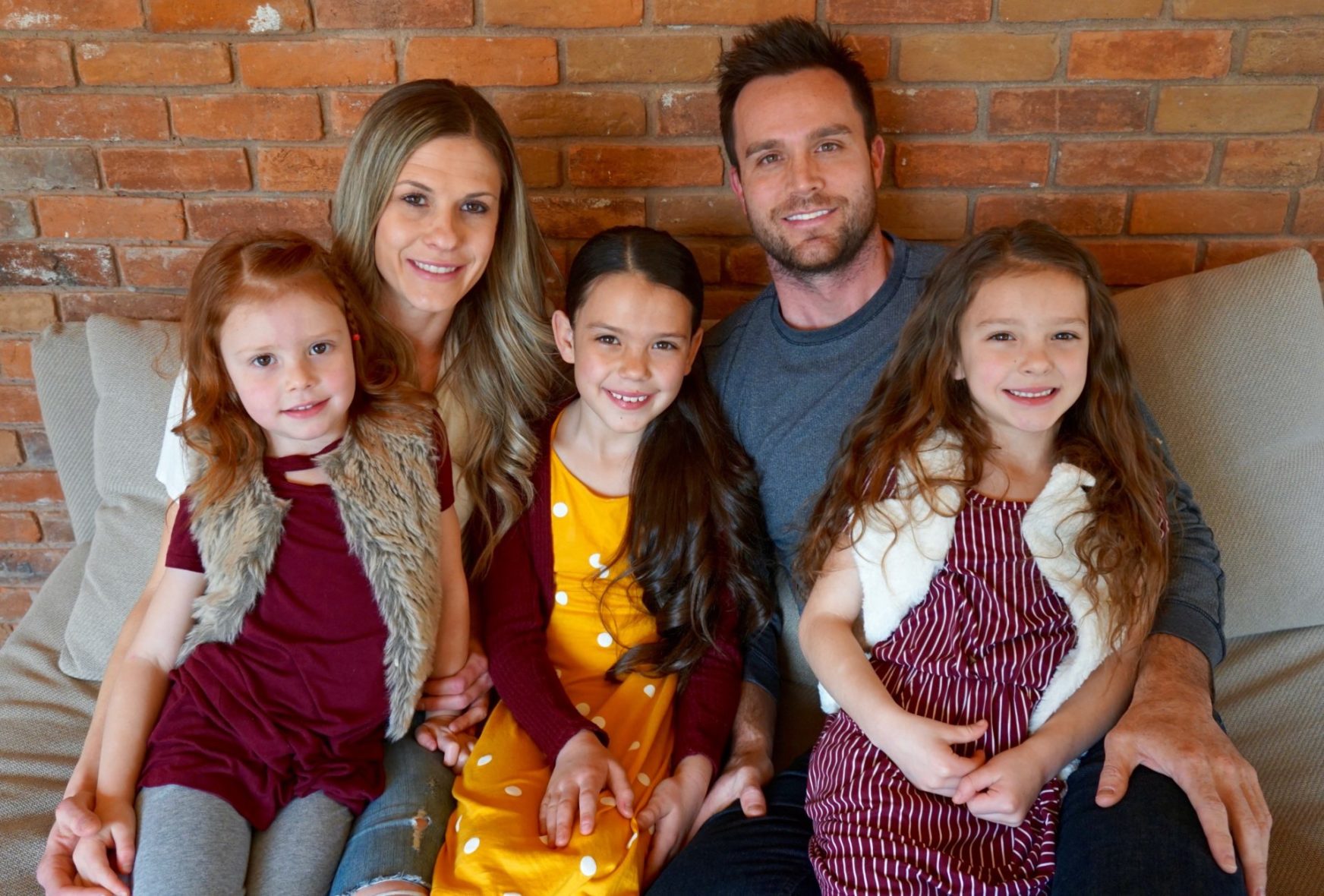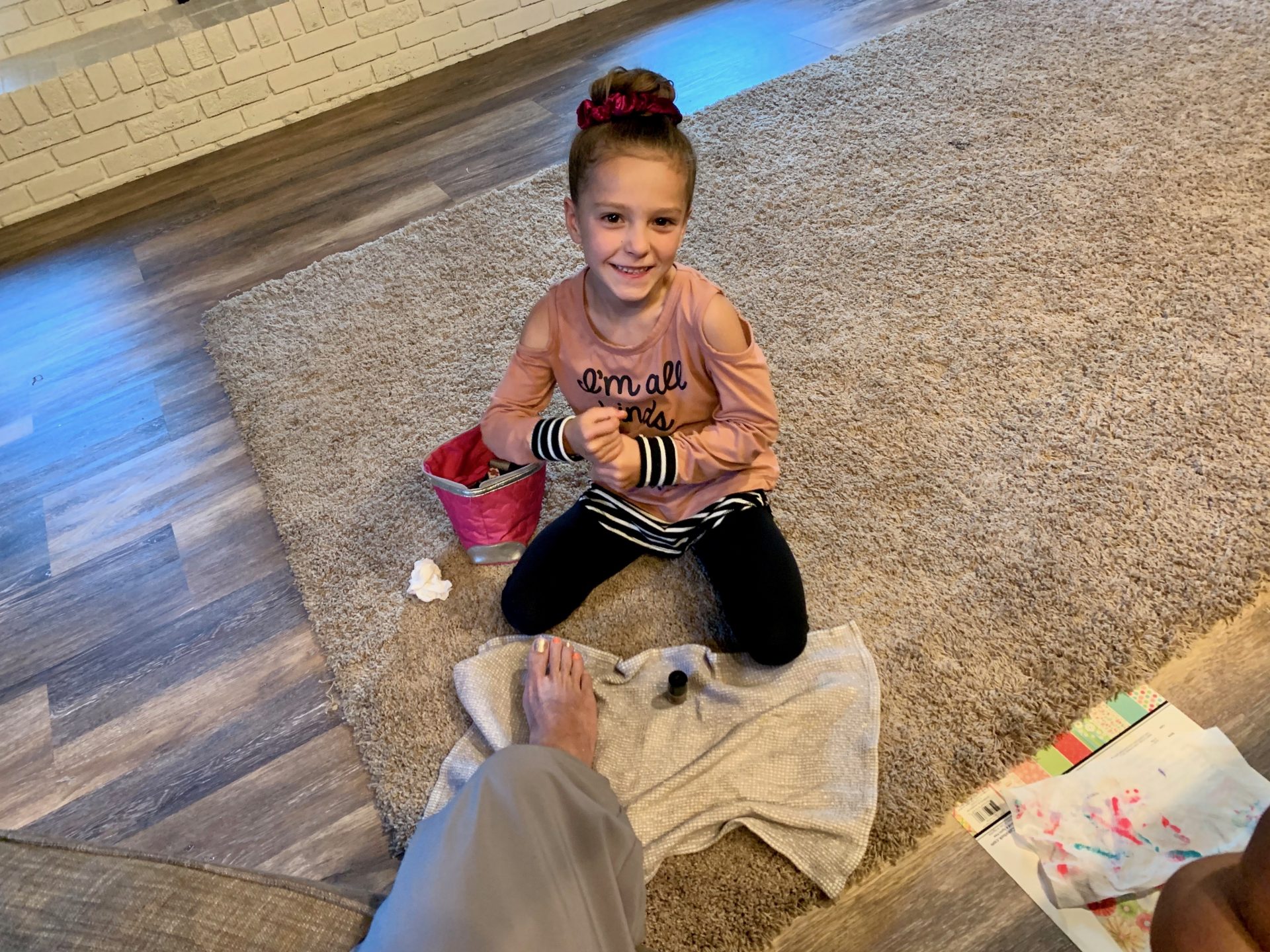
I’d just settled onto the couch to watch TV when my daughter blindsided me with the request.
“Can I paint your toenails, Daddy?” my 6-year-old asked, wielding tubes of pink and silver polish.
I began to explain that Daddy doesn’t paint his toenails, when I noticed my wife, Nicki, side-eyeing me from the other end of the couch.
“They’re bored,” she mouthed with a concerned look.
By “they,” she meant our three daughters, ages 8 and under. The concerned look meant that I should be more considerate of our 6-year-old’s need for interaction and activity. She’s been away from school and most of her friends for months. It was a clear cue from someone who’d spent more time with our kids that day than I had.
I removed my socks.

Playing nail tech is one of the countless ways our girls have stretched their creativity and tried to establish some semblance of structure amid a lingering pandemic. Each day feels more like a six-month summer vacation — without the vacation part.
But you can only paint toenails — or walk to the park or walk the dog or take a drive — so many times during a pandemic.
Our girls are starving for the structure and activities with friends and other adults that school provides. They’re ready to go back. We’re struggling with our options.
Amid a renewed surge of confirmed coronavirus cases in Idaho since June, both Gov. Brad Little and President Trump have made clear their expectations that kids return to the classroom. Less clear is how that decision will impact the spread of COVID-19.
Idaho is letting local leaders shape their reopening plans. Our district has infused some choice into its model, with options for face-to-face learning or an online alternative for families more apprehensive about sending their kids.
An in-person return would mean more structure and activity. Homeschooling for us this spring — if you can call it that — was a struggle. With Nicki and I both working from home, we tried, but we can’t reach the level of instruction and interaction they get at school with their teachers and classmates.
Sending them back to school may be the best option for us, but it would have its downsides. As a former teacher, I know how quickly a classroom can turn into a giant petri dish. Fortunately, Nicki and I read about how younger children are at a lower risk for serious symptoms and spreading the virus. Still, I worry they could bring it home to Nicki, who has asthma and is expecting a baby in December.
The online option would minimize that risk, but our kids are young. And online learning is largely foreign to them — and us.
They’re also learning how to read, at varying degrees. How do you teach a kindergartener to read through a computer screen?
That’s on top of the fact that Idaho’s online schools rank among the state’s lowest performing, year after year. The approach works for some students, but it’s a tough go for many others.
That leaves us with a continued stab at “homeschooling.” With both of us tied up with jobs during the day? Yeah, right.
With leeway from state leaders, school will look different from district to district, school to school, student to student. Kids will come and go at different times, learn through different means.
And while returning might be the best option for one child, staying home might be better for another.
Questions linger. Like many of you, we’re gearing up for another round of tough choices this fall.
What are you considering for your kids? How will you decide what’s best for them? I’d love to hear from you at [email protected].
